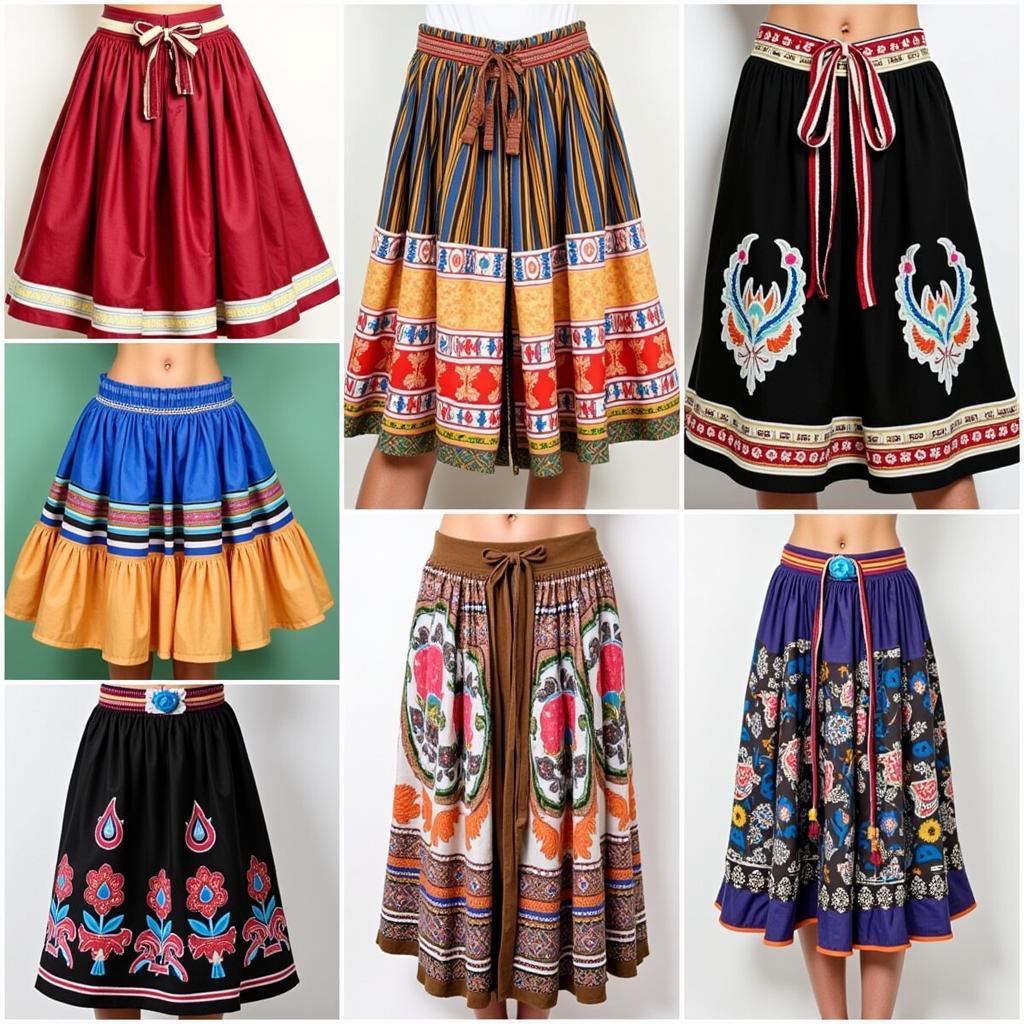Deb Haaland Ribbon Skirt: A Symbol of Cultural Pride and Representation
October 12, 2024Deb Haaland made history in 2021 as the first Native American to serve as a cabinet secretary in the United States government. Her appointment as Secretary of the Interior was a momentous occasion, celebrated by Indigenous communities across the nation. Beyond the significance of her political achievement, Secretary Haaland’s choice of attire for her swearing-in ceremony sparked widespread attention and dialogue. The focus: a beautiful and intricately designed ribbon skirt.
The ribbon skirt, far from being simply a garment, carries profound cultural significance for many Native American tribes. It represents a heritage passed down through generations, embodying resilience, identity, and a deep connection to their ancestry. Secretary Haaland’s decision to wear a ribbon skirt, especially on such a historic occasion, resonated deeply, highlighting the importance of representation and visibility for Indigenous peoples.
 Deb Haaland in Ribbon Skirt at Inauguration
Deb Haaland in Ribbon Skirt at Inauguration
The Significance of the Ribbon Skirt
For centuries, ribbon skirts have been worn by Native American women for various ceremonies, dances, and everyday life. Each tribe and region may have unique styles and designs, often incorporating meaningful symbols and colors. The ribbons themselves hold significance, representing prayers, stories, and the interconnectedness of life.
The choice of colors often reflects natural elements or spiritual beliefs. For instance, red may symbolize the Earth and lifeblood, while blue might represent the sky or water. Yellow could signify the sun’s energy, and green, the abundance of nature. The intricate patterns woven into the skirts often depict animals, plants, or geometric designs that hold cultural significance.
 Variety of Native American Ribbon Skirt Designs
Variety of Native American Ribbon Skirt Designs
Deb Haaland’s Ribbon Skirt: A Powerful Statement
Deb Haaland’s decision to wear a ribbon skirt was a powerful assertion of her identity as a Laguna Pueblo woman. It was a visible reminder of the often-overlooked history and presence of Indigenous peoples in the United States. By choosing to wear this traditional garment, she honored her ancestors and paved the way for future generations of Native Americans to embrace their heritage with pride.
Her action sparked a nationwide conversation about cultural representation and the importance of diversity in positions of power. Many saw it as a symbol of hope and progress, a sign that Indigenous voices were finally being recognized and celebrated at the highest levels of government.
Beyond the Ribbon: Deb Haaland’s Legacy
While the ribbon skirt served as a powerful visual representation of her heritage, Deb Haaland’s impact extends far beyond her attire. As Secretary of the Interior, she has been a staunch advocate for environmental protection, tribal sovereignty, and addressing the legacy of historical injustices faced by Native American communities.
Her appointment and her unwavering commitment to her heritage serve as an inspiration to countless individuals, particularly young Indigenous people who see in her a role model and a beacon of hope for a more just and equitable future.
 Deb Haaland Meeting with Tribal Leaders
Deb Haaland Meeting with Tribal Leaders
Conclusion
Deb Haaland’s ribbon skirt is more than just a piece of clothing; it’s a symbol of cultural pride, resilience, and the power of representation. Her decision to wear it during her swearing-in ceremony sparked important conversations about diversity, inclusion, and the importance of honoring one’s heritage. As she continues to serve in her historic role, Deb Haaland’s legacy will undoubtedly inspire generations to come.